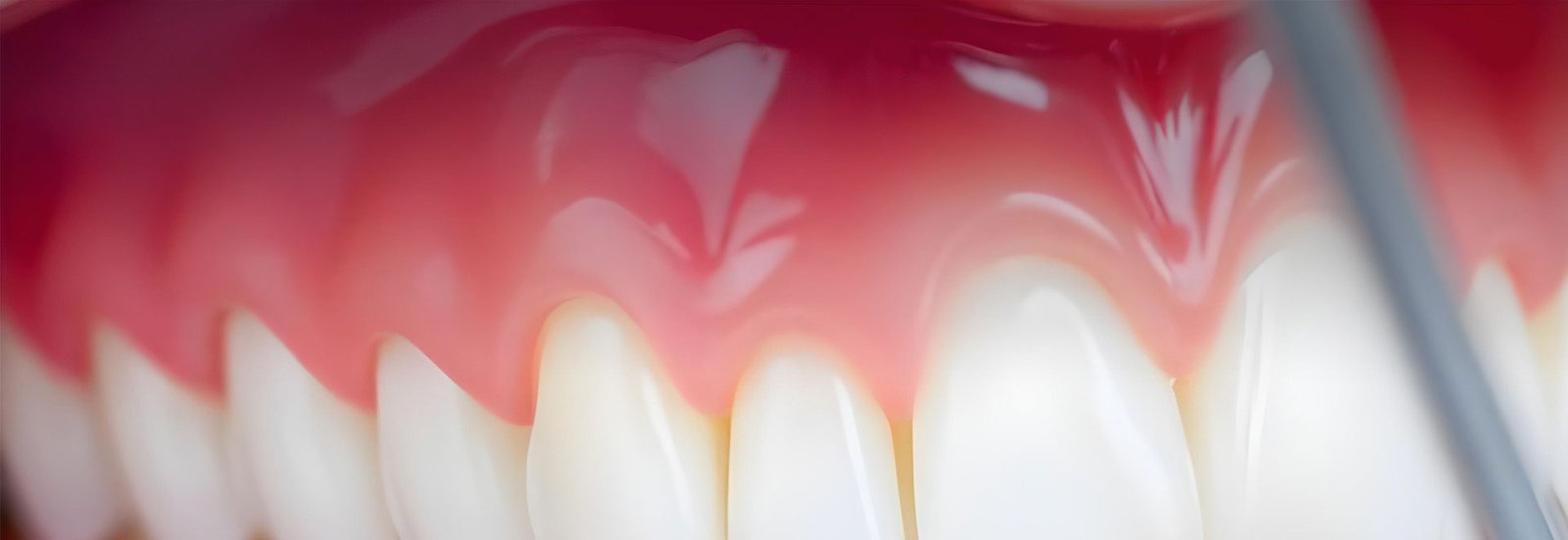
PERIODONTOLOGY / GUM TREATMENTS
What is Periodontics?
Periodontics is the branch of dentistry that deals with gum diseases and their treatments. This branch deals with the gums and bones, which are the tissues around the teeth. The two most common types of gum diseases are “gingivitis” and “periodontitis”.
What is Gingivitis?
Gingivitis is the initial stage of gum disease. The gums become red, swollen and begin to bleed. At this stage, there is no bone loss in the bone supporting the teeth. It usually occurs due to inadequate oral hygiene. With appropriate treatment and oral care, gums can regain their health.
What is Periodontitis?
If left untreated, gingivitis can turn into periodontitis. Bacteria accumulated in plaque irritate the gum tissue and cause the gums and bone to break down. The gums separate from the teeth, creating pockets. As these pockets deepen, bone destruction progresses and can lead to tooth loss if left untreated.
Types of Periodontitis :
• Aggressive Periodontitis : Associated with rapid bone loss and genetic predisposition.
• Kronik Periodontitis: Yaygın görülen formdur ve dişleri destekleyen dokulardaki enflamasyonun ilerlemesiyle karakterizedir.
• Sistemik Hastalıklarla İlişkili Periodontitis: Diyabet, kalp hastalıkları gibi sistemik hastalıklarla bağlantılıdır.
• Nekrotik Periodontal Hastalık: Dişeti ve çevre dokuların nekrozuyla karakterize, bulaşıcı bir hastalıktır.
Risk Factors for Gum Disease :
- Age : Weight is seen more frequently in elderly individuals .
- Cigarettes / Tobacco Products : Smoking increases the risk of periodontal disease .
- Genetics : Genetic predisposition increases the risk of gum disease .
- Stress: Stress negatively affects the fight against infection .
- Medications : Some medications such as birth control pills and antidepressants can affect oral health .
- Teeth Clenching / Grinding : It can damage periodontal tissues by applying excessive force to the teeth .
- Systemic Diseases : Diseases such as diabetes and heart diseases negatively affect gum health
- Malnutrition / Obesity : Weakens the immune system and negatively affects gum health .
Symptoms of Gum Diseases :
- Redness, swelling and sensitivity in the gums
- Bleeding during tooth brushing
- Gum recession
- Tooth loss or gaps in teeth
- Bad breath and wounds
How is Gum Disease ( Periodontitis ) Diagnosed ?
- The dentist will first perform an exam to determine if gum recession (periodontitis) is present and, if so, how severe it is. During this exam, the dentist will review the patient ‘s medical history to identify factors that may be contributing to the symptoms, such as smoking or the use of certain medications that can cause dry mouth .
- Examine the patient’s mouth to check for plaque and tartar buildup and check for easy bleeding .
- He / she will measure the depth of the pockets between the gums and teeth at various points in the mouth by placing a dental probe next to the tooth. In a healthy mouth, pocket depth is usually between 1 and 3 millimeters. Pockets deeper than 4 millimeters may indicate the presence of periodontitis. Pockets deeper than 5 millimeters may not be cleaned properly and may require intervention .
- Dental X – rays will be taken to check for bone loss in areas where deep pockets are observed .
- After these steps, the dentist can determine a stage and degree of gum recession (periodontitis) depending on the severity of the disease, the complexity of the treatment, existing risk factors and the general health status of the patient .
Prevention of Gum Diseases :
- Brushing Teeth : Teeth and gums should be cleaned after meals.
- Using Dental Floss : Cleans the plaque between teeth.
- Use of mouthwash : Helps with mechanical cleaning.
- Knowing Risk Factors : Factors such as smoking and diabetes should be taken into consideration.
- Regular Dentist Check -up : Check-up every 6 months is necessary.
Treatment of Gum Diseases :
- Non – surgical Treatment : Dental tartar cleaning and root surface smoothing .
- Surgical Treatment: Surgical cleaning of periodontal pockets and application of bone graft when necessary.
Gum Recession:
- Treatment Methods : Depending on the reason for the withdrawal, conservative methods and surgical treatments are applied.
Gum Enlargements:
- Causes: Bacterial infection, hormonal changes, some medications and all moral reasons .
- Treatment : Surgical removal of the enlarged tissues .
Periodontal Plastic Surgery:
- Smile design, gum leveling, treatment of gum recession and other aesthetic procedures .
Peri – implant Diseases :
- Peri-implant Mucositis: There is no inflammation in the soft tissue or bone destruction .
- Peri-implantitis: Inflammation that causes bone destruction requires surgical treatment .
Laser Applications in Dentistry :
- Soft Tissue Lasers: Procedures such as gingivectomy, gingivoplasty, frenectomy .
- Hard Tissue Lasers: Caries removal, bone surgery, root canal sterilization .
- Teeth Whitening : Laser – activated whitening agents are used .
Laser technology simplifies surgical procedures in dentistry, provides bleeding – free operations and offers a rapid healing process. The use of protective eyewear is essential during applications .